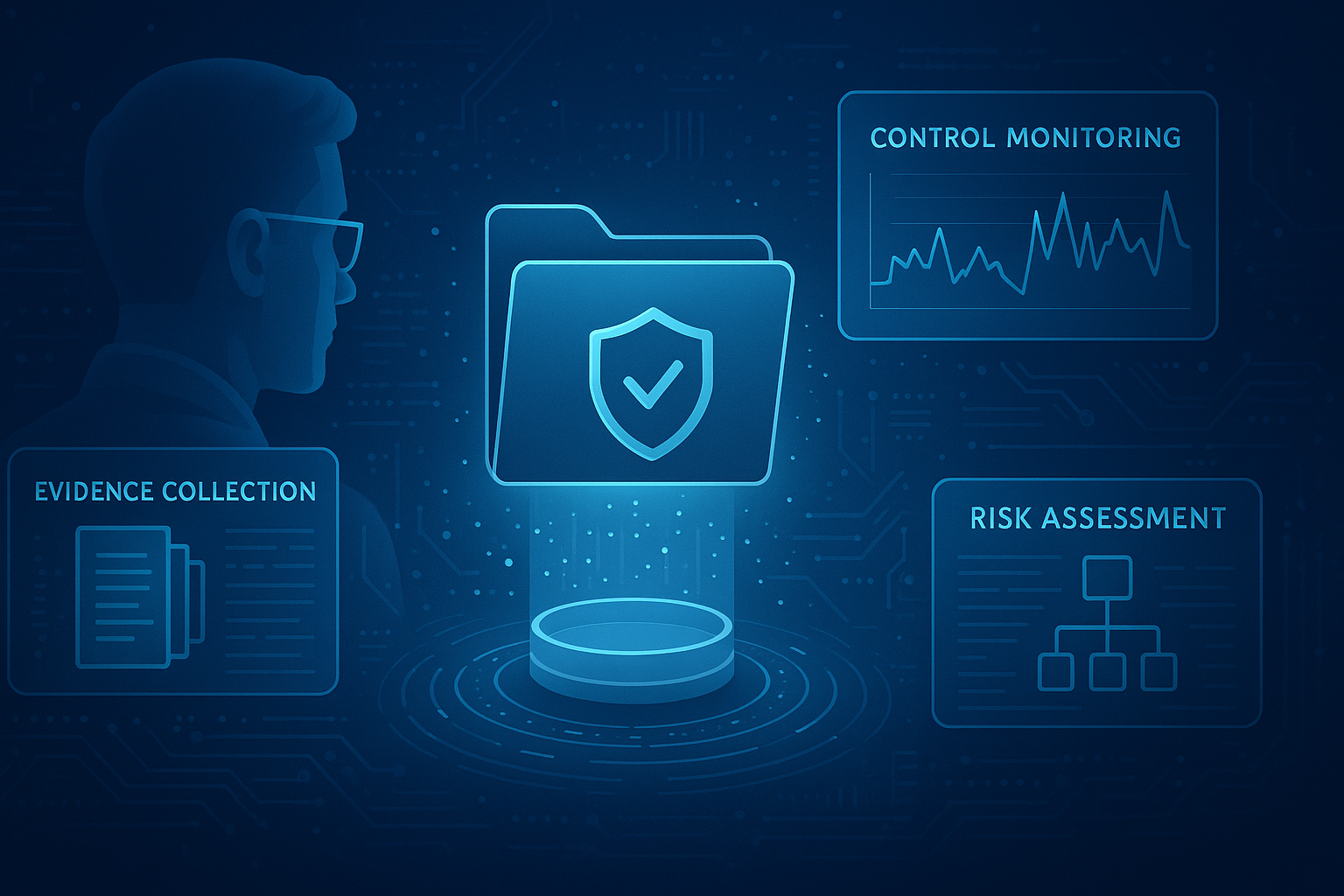In an era dominated by interconnected systems and the ever-expanding digital landscape, cyber risk has transcended mere technical jargon to become a paramount concern for individuals, businesses, and governments alike. Large regulatory bodies have rolled out new regulations, like the SEC Cybersecurity Rule or the updated NIST CSF 2.0, to combat the changing tide. The last decade has witnessed an unprecedented surge in cyber threats, challenging traditional notions of security and urging us to redefine how we perceive and manage risk in the virtual realm.
As we embark on this journey into the intricate world of cybersecurity, this blog aims to dissect the multifaceted nature of cyber risk and how security teams can leverage a cyber risk quantification framework to assess security risk posture accurately.
As organizations grapple with safeguarding their digital assets, the need for effective measurement and management of cyber risk has become more pronounced than ever. This blog will explore common approaches to assessing cyber risk, examining the methodologies that have emerged as stalwarts in the battle against digital threats. Each method, from qualitative cyber risk assessments to quantitative models, is crucial in fortifying our defenses against cyber adversaries.
The paradigm shift toward cyber risk quantification is at the forefront of this evolving landscape—a method that brings precision and clarity to cyber risk management. We will unravel the intricacies of cyber risk quantification, exploring how it has become a cornerstone in cyber risk management plans. Organizations can make informed decisions by assigning tangible values to potential risks, strategically allocating resources, and fortifying digital resilience.
Quantifying Cyber Risk Using a Framework
While identifying cyber risks is a crucial first step, quantifying these risks takes the understanding to a whole new level. Cyber risk quantification involves assigning a numerical value to potential threats, allowing organizations to prioritize and allocate resources more effectively. This method enables informed decision-making, as executives can assess the potential impact of different risks and make strategic choices to mitigate them.
Take the SEC Cybersecurity Rule, for example. One of the key takeaways from this regulation is increased Board insight and governance as well as reporting to executive leadership. Cyber risk quantification sits at the nexus of these two tasks as it translates technical cyber knowledge into business terms of dollars and cents. Business-side leaders can effectively make decisions once they understand the financial implications (positive or negative) for each quantified risk. Understanding financialized cyber insights helps organization leaders allocate resources to needed areas and track the impact of investment over time.
Basics of Quantitative Cyber Risk Assessments
Before delving into cyber risk quantification, it's essential to grasp fundamental concepts. "Risk" in this context refers to the probability of a cyber attack, considering the potential vulnerabilities in an organization's systems. Understanding threats, exposure, and likelihood is crucial for navigating the cyber risk landscape.
Security teams grapple with various cyber risks, each demanding meticulous monitoring and strategic risk management. Among the pervasive threats are multiple forms of malware, including ransomware, which can compromise systems and data integrity. Phishing attacks seek to exploit human vulnerabilities. Distributed Denial of Service (DDoS) attacks aim to disrupt normal operations by overwhelming networks or websites with excessive traffic. Whether intentional or accidental, insider threats pose a significant risk as employees may inadvertently compromise security. Advanced Persistent Threats (APTs) represent sophisticated, prolonged attacks that go undetected within networks.
Vulnerabilities in unpatched software, password attacks, and man-in-the-middle attacks further heighten the risk landscape. Mitigating these risks requires a comprehensive approach, incorporating continuous control monitoring, regular cyber risk assessments, quantified cyber insights, employee training, and robust security measures to safeguard against the evolving threat landscape.
Risk Measurement and Metrics
Once the basics are established, the next step is to measure and express cyber risks in quantifiable terms. Metrics play a pivotal role in this process, offering a standardized way to communicate the severity and likelihood of potential threats. Typical metrics include the annualized loss expectancy (ALE) and the risk exposure ratio (RER), providing organizations with a tangible way to evaluate their risk posture.
Risk Analysis Techniques
Various techniques exist for analyzing and assessing cyber risks. Risk matrices, which visually represent the impact and likelihood of risks, are famous for their simplicity. Scenario analysis involves considering different potential scenarios and their respective results.
Probabilistic models like Monte Carlo simulations offer a more sophisticated approach, incorporating statistical methods to estimate risk probabilities.
Challenges and Considerations
While cyber risk quantification is a powerful tool, it comes with its challenges. Accurate data collection, the dynamic nature of technology, and the ever-evolving threat landscape can make quantifying risks complex. Organizations must navigate these challenges to derive meaningful insights from risk quantification efforts.
Future Trends and Developments
As technology advances, so too does the field of cyber risk quantification. The future promises more sophisticated tools and methodologies, leveraging artificial intelligence and machine learning to predict and assess cyber threats accurately. As organizations integrate these advancements into their cybersecurity strategies, staying abreast of emerging trends will be crucial for maintaining robust cyber defenses.
This beginner's guide lays the foundation for understanding and implementing a cyber risk quantification framework. By grasping the fundamentals, exploring measurement metrics, and considering advanced risk analysis techniques, organizations can enhance their ability to proactively manage and mitigate cyber risks. However, as technology evolves, so must our approach to cybersecurity, making it essential for organizations to stay vigilant and adaptive in the face of emerging trends and developments.
Common Cyber Risk Quantification Frameworks
Transparency is a crucial factor when it comes to cyber risk quantification. Many services and platforms offer services that deliver a risk score reflective of quantified insights. Yet, users are left wondering how these calculations were even met and what a score of 2 or 4 means for their cyber risk operations. Forward-looking organizations should leverage industry-recognized models that explicitly state how calculations were performed, like the FAIR (Factor Analysis of Information Risk) model.
FAIR is a cyber risk quantification model designed to provide organizations with a structured and quantitative approach to assess and manage information security risks. This model stands out for bringing precision and objectivity to cybersecurity's often complex and subjective realm. FAIR breaks down the risk assessment process into critical components, including identifying and analyzing factors such as assets, threats, vulnerabilities, and impact. One standout property of the FAIR model is its emphasis on using probabilities and ranges, allowing organizations to express uncertainties inherent in risk assessments more accurately.
FAIR also promotes a common language for risk communication, namely financial terms, fostering a better understanding among stakeholders and executive leadership. By adopting FAIR, organizations gain a practical and scalable method for consistently evaluating and prioritizing cyber risks, enabling them to make informed decisions regarding resource allocation and risk mitigation strategies in an increasingly dynamic and sophisticated threat landscape.
Getting ready to evaluate CRQ vendors? Download our research brief on what to look for in cyber risk quantification software.
Leveraging Quantified Cyber Risk Insights
Understanding the basics, employing standardized metrics, and navigating challenges are vital steps for CRQ. Adopting transparent and industry-recognized models like FAIR equips organizations to make informed decisions, fostering a common language for effective risk communication in an ever-evolving threat landscape.
As technology advances, the future of cyber risk quantification promises even more sophisticated tools and methodologies, leveraging artificial intelligence and machine learning. Staying ahead of these trends will be crucial for organizations striving to maintain robust cyber defenses. Embracing transparent models like FAIR will continue to be imperative, offering organizations a structured and scalable means of evaluating and prioritizing cyber risks in an environment where precision and adaptability are paramount.
Contact us to discover how CyberStrong can advance your approach to cyber risk quantification and improve your cyber risk insights for effective management.





.png)
.png)
.png)
%201.png)
.png)




